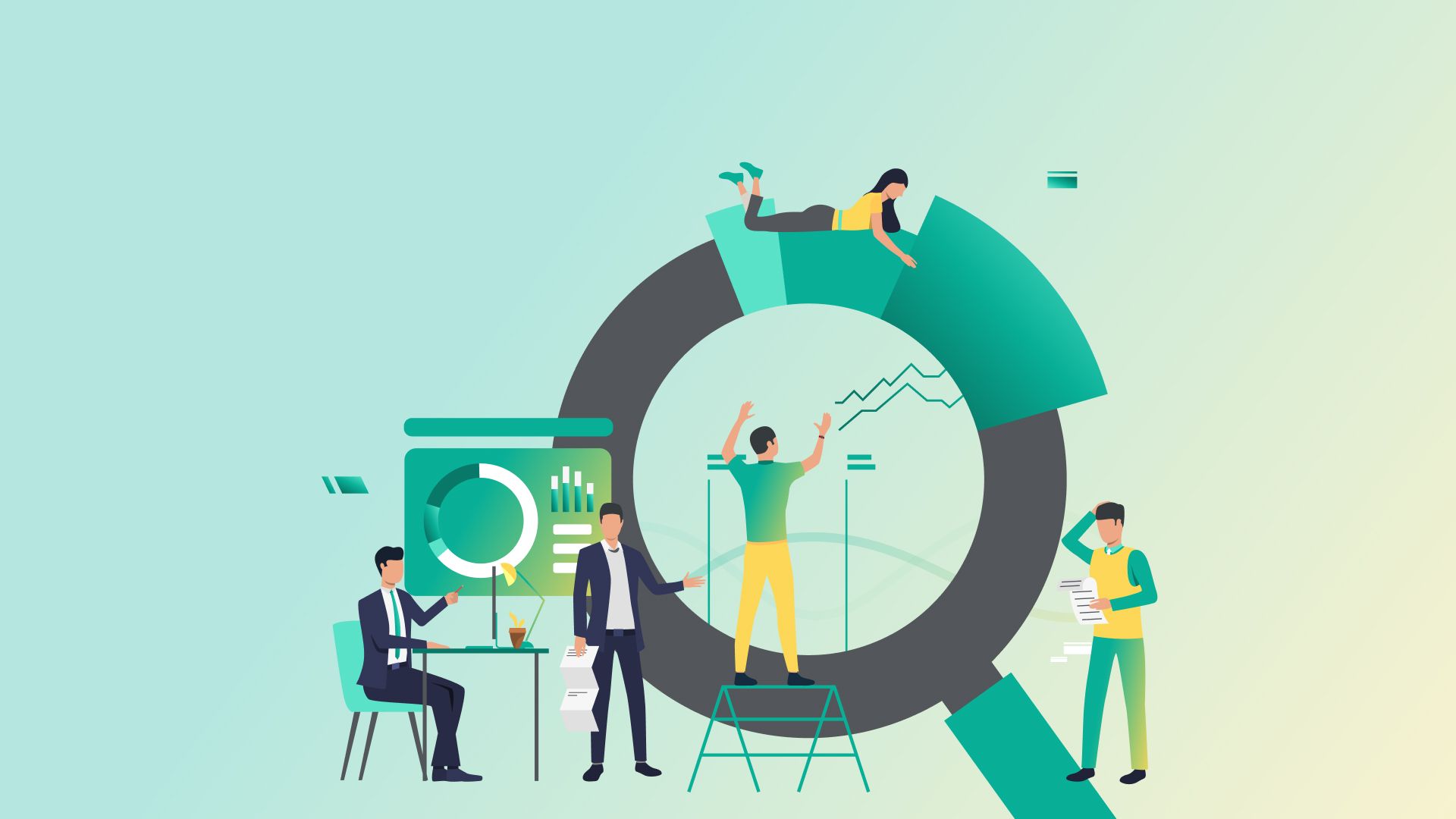In the fast-paced world of project management, the agile methodology has become a popular approach for delivering successful projects. But what exactly is agile methodology? This method agile is a process methodology that focuses on breaking down projects into smaller, more manageable tasks, allowing for continuous iteration and improvement throughout the agile project methodology.
By adopting an agile approach, teams can adapt to changes quickly and effectively, resulting in more flexible and dynamic project outcomes. So, what are agile methodology and how can agile development methods benefit your team? Let's explore the ins and outs of agile methodology and how it can revolutionize your project management approach.
Core Principles of Agile
Agile methodology is built on a set of core principles that guide software development teams in delivering high-quality products efficiently. These principles are outlined in the Agile Manifesto, which emphasises individuals and interactions over processes and tools, working software over comprehensive documentation, customer collaboration over contract negotiation, and responding to change over following a plan.
Agile methodologies promote iterative and incremental development, allowing teams to adapt to changing requirements and deliver functional product increments frequently. The principles of Agile also highlight the importance of customer feedback, collaboration, and continuous improvement. By adhering to these principles, Agile teams can create a flexible, responsive, and efficient development process that meets customer needs and enhances project success.

Agile Frameworks
Scrum
Scrum is one of the most widely used Agile frameworks in software development. It provides a structured approach to managing complex projects by dividing the work into short, manageable sprints, typically lasting two to four weeks. The Scrum framework includes specific roles, such as the Scrum Master, Product Owner, and Development Team.
The Scrum Master facilitates the process, ensuring that the team adheres to Agile practices and removes any impediments. The Product Owner manages the product backlog, prioritising tasks based on business value and customer needs. The Development Team is responsible for delivering the product increments.
Key Scrum events include Sprint Planning, Daily Scrum, Sprint Review, and Sprint Retrospective. These events ensure continuous communication, feedback, and improvement throughout the project lifecycle.
Kanban
Kanban is another popular Agile framework that focuses on visualising the workflow and managing work in progress. Unlike Scrum, Kanban does not prescribe specific roles or time-bound sprints. Instead, it uses a Kanban board to visualise tasks and their progress, allowing teams to manage the flow of work effectively. The board typically has columns representing different stages of the development process, such as "To Do," "In Progress," and "Done." Team members move tasks across the board as they progress, providing a clear view of the project's status. Kanban emphasises continuous delivery, limiting work in progress to prevent bottlenecks and ensuring a steady flow of tasks. This approach is particularly useful for teams that require flexibility and need to adapt quickly to changes.
Extreme Programming (XP)
Extreme Programming (XP) is an Agile framework that focuses on improving software quality and responsiveness to changing customer requirements. XP practices include frequent releases in short development cycles, promoting high customer involvement and continuous feedback. Key practices of XP include pair programming, test-driven development, continuous integration, and simple design.
Pair programming involves two developers working together on the same code, enhancing code quality and knowledge sharing. Test-driven development ensures that tests are written before code, leading to better-tested software. Continuous integration helps detect issues early by automatically integrating code changes and running tests. XP encourages a high level of customer collaboration and aims for technical excellence through disciplined practices. This framework is particularly beneficial for projects that require high adaptability and close customer interaction.
Key Roles In Agile Methodologies
Agile methodologies emphasise collaboration, flexibility, and customer satisfaction, and key roles within these frameworks ensure that these principles are effectively implemented. Understanding these roles is essential for successfully adopting Agile in your organisation.
Product Owner
The Product Owner is responsible for maximising the value of the product resulting from the work of the development team. They manage the product backlog, prioritise tasks, and ensure that the team is working on the most valuable features. The Product Owner represents the customer's interests and works closely with stakeholders to understand their needs and feedback. Their role is crucial in bridging the gap between the customer and the development team, ensuring that the final product meets or exceeds expectations.
Scrum Master
The Scrum Master is a facilitator and coach who helps the Scrum team adhere to Agile principles and practices. They are responsible for removing obstacles that impede the team's progress and ensuring that Scrum events, such as daily stand-ups, sprint planning, and retrospectives, are conducted effectively. The Scrum Master also works to foster a culture of continuous improvement within the team, helping them to become more efficient and effective in their processes.
Development Team
The Development Team consists of professionals who work together to deliver a potentially releasable product increment at the end of each sprint. This team is cross-functional, meaning that it includes all the skills necessary to create the product increment. Team members are self-organising, taking ownership of their work and collaborating closely to achieve the sprint goals. This structure promotes a high level of accountability and encourages team members to support each other in delivering high-quality software.
Stakeholders
Stakeholders include anyone with an interest in the project, such as customers, users, managers, and other parties who provide feedback and input throughout the development process. They play a vital role in Agile methodologies by providing the development team with valuable insights and feedback. Regular communication with stakeholders helps ensure that the project remains aligned with business objectives and customer needs.
Agile Coach
An Agile Coach is an experienced professional who supports teams and organisations in adopting and improving Agile practices. They provide guidance, training, and mentorship to help teams implement Agile frameworks effectively. Agile Coaches work to enhance the team's understanding of Agile principles, promote a culture of continuous improvement, and help resolve any issues that may arise during the transition to Agile.
Executive Management
Executive Management plays a crucial role in the successful adoption of Agile methodologies by providing the necessary support, resources, and strategic direction. Their involvement is essential in fostering an Agile culture within the organisation and ensuring that Agile principles are integrated into the overall business strategy. By championing Agile practices, executive management can help drive organisational change and ensure that teams have the support they need to succeed.

Benefits of Agile Methodology
Enhanced flexibility and adaptability
Agile methodology provides enhanced flexibility and adaptability, which are crucial in today’s fast-paced business environment. Unlike traditional project management approaches like the Waterfall model, Agile allows development teams to respond quickly to changes and new requirements. By breaking the project into smaller iterations or sprints, teams can adjust their plans and priorities based on feedback and changing market conditions. This iterative approach ensures that the final product is more aligned with customer needs and can adapt to any unforeseen changes in the project scope or objectives.
Improved customer satisfaction
One of the primary benefits of Agile methodology is improved customer satisfaction. Agile emphasises continuous customer involvement and feedback throughout the development process. Regular sprint reviews and product demonstrations allow customers to see progress and provide input, ensuring that the final product meets their expectations. This ongoing interaction helps build a strong relationship with customers, making them feel valued and heard. By incorporating customer feedback into each iteration, Agile teams can deliver a product that better meets the customer’s needs and increases overall satisfaction.
Better product quality
Agile methodology leads to better product quality through its emphasis on iterative development and continuous testing. Each sprint includes a phase of testing and quality assurance, allowing teams to identify and fix defects early in the development process. This frequent testing ensures that issues are addressed promptly, reducing the risk of major problems at the end of the project. Additionally, the collaborative nature of Agile encourages team members to share their expertise and insights, leading to a higher-quality product. By focusing on delivering working software in each iteration, Agile ensures that the product is robust and meets high-quality standards.
Increased team collaboration and communication
Agile methodology significantly enhances team collaboration and communication. The Agile framework promotes regular interactions among team members through daily stand-up meetings, sprint planning sessions, and retrospectives. These meetings ensure that everyone is on the same page, understands their roles and responsibilities, and can address any issues promptly. The collaborative environment fosters a sense of ownership and accountability among team members, improving morale and productivity. By maintaining open lines of communication, Agile teams can work more cohesively and effectively, leading to better project outcomes.
Faster time to market
Agile methodology helps teams deliver products faster to the market. By focusing on incremental and iterative development, Agile teams can release functional product increments more frequently. This approach allows organisations to get their products to customers quicker, providing a competitive edge in the marketplace. The ability to deliver features and updates rapidly ensures that businesses can respond swiftly to market demands and customer feedback. Faster time to market not only boosts business agility but also helps in achieving quicker returns on investment, making Agile a valuable approach for modern software development projects.
Implementing Agile in Your Organization
Step 1: Understanding Agile Principles and Values
Begin by educating your team and stakeholders about the Agile principles and values outlined in the Agile Manifesto. These include prioritising individuals and interactions over processes and tools, working software over comprehensive documentation, customer collaboration over contract negotiation, and responding to change over following a plan. Understanding these principles will help everyone involved embrace the Agile mindset.
Step 2: Training and Onboarding
Provide comprehensive training for all team members, including developers, project managers, and stakeholders. This training should cover the basics of Agile methodologies, such as Scrum, Kanban, and Extreme Programming (XP). Consider hiring experienced Agile coaches or consultants to guide your team through the initial stages of implementation. Tools like Jira and Atlassian can be instrumental in managing Agile projects effectively.
Step 3: Define Roles and Responsibilities
Clearly define the roles and responsibilities within your Agile team. Key roles include the Product Owner, who manages the product backlog and prioritises tasks; the Scrum Master, who facilitates the Agile process and removes impediments; and the Development Team, responsible for delivering the product increments. Ensure that each team member understands their role and how they contribute to the overall project goals.
Step 4: Start with Pilot Projects
Begin your Agile implementation with a few pilot projects. Choose projects that are manageable in scope and have a high likelihood of success. This approach allows your team to practice Agile principles on a smaller scale, learn from any mistakes, and refine their processes before rolling out Agile across the entire organisation.
Step 5: Adopt Agile Tools and Practices
Implement Agile tools and practices that facilitate collaboration, transparency, and continuous improvement. Tools like Kanban boards for visualising work, burndown charts for tracking progress, and daily stand-up meetings for quick updates are essential. Encourage practices such as regular retrospectives to reflect on what went well and what can be improved, ensuring continuous learning and adaptation.
Step 6: Foster a Culture of Collaboration and Communication
Agile thrives on collaboration and open communication. Foster a culture where team members feel comfortable sharing ideas, feedback, and concerns. Regularly involve stakeholders and customers in the development process to gather feedback and ensure the product meets their needs. This collaborative approach enhances team cohesion and ensures everyone is aligned with the project goals.
Step 7: Measure and Adapt
Continuously measure the effectiveness of your Agile implementation using key performance indicators (KPIs) such as delivery speed, product quality, and customer satisfaction. Use these metrics to identify areas for improvement and make necessary adjustments. Agile is an iterative process, and it is crucial to adapt and refine your practices based on feedback and performance data.
Challenges and Solutions in Agile Adoption
Adopting Agile methodologies can transform project management and software development processes, leading to improved efficiency, flexibility, and customer satisfaction. However, transitioning to Agile is not without its challenges. Understanding these challenges and how to address them can facilitate a smoother Agile adoption and help teams maximise the benefits of this approach.
Resistance to Change
One of the most common challenges in Agile adoption is resistance to change. Teams and organisations accustomed to traditional project management methods, such as the Waterfall model, may find it difficult to adjust to Agile’s iterative and collaborative approach. To overcome this resistance, it is essential to provide thorough training and education on Agile principles and practices. Involving key stakeholders in the transition process and demonstrating the tangible benefits of Agile through pilot projects can also help build support and reduce resistance.
Lack of Agile Knowledge
A lack of understanding of Agile methodologies can hinder successful adoption. Teams may struggle with the new terminology, roles, and processes associated with Agile. Investing in comprehensive training programmes for all team members is crucial. Additionally, hiring experienced Agile coaches or consultants can provide valuable guidance and support during the transition period. Continuous learning and knowledge sharing within the organisation can help reinforce Agile principles and practices over time.
Inadequate Communication and Collaboration
Effective communication and collaboration are at the heart of Agile methodologies. However, teams may face challenges in maintaining open and transparent communication, especially in distributed or remote work environments. Implementing regular stand-up meetings, utilising collaboration tools like Jira and Confluence, and fostering a culture of open communication can enhance collaboration. Encouraging face-to-face interactions whenever possible, even through video conferencing, can also strengthen team cohesion and communication.
Insufficient Leadership Support
Successful Agile adoption requires strong support from leadership. Without buy-in from executives and managers, Agile initiatives may lack the necessary resources and commitment to succeed. It is important to educate leaders on the benefits of Agile and involve them in the transformation process. Leaders should champion Agile principles, allocate resources for training and tools, and actively participate in Agile ceremonies. Their support and encouragement can drive the cultural shift needed for Agile adoption.
Difficulty in Measuring Success
Measuring the success of Agile adoption can be challenging. Traditional project management metrics may not fully capture the effectiveness of Agile practices. To address this, organisations should establish new metrics aligned with Agile values, such as customer satisfaction, team velocity, and the frequency of product releases. Regular retrospectives and feedback loops can also provide insights into the progress and areas for improvement. By continuously assessing and adjusting their Agile processes, teams can achieve better outcomes and demonstrate the value of Agile adoption.
Balancing Flexibility and Structure
Agile methodologies promote flexibility and adaptability, but maintaining a balance between flexibility and necessary structure can be difficult. Teams may struggle to find the right level of documentation, planning, and control. Establishing clear guidelines and best practices for Agile processes can help maintain this balance. Regular reviews and adjustments based on feedback and outcomes can ensure that teams remain agile while achieving their project goals.
Conclusion
Adopting Agile methodologies offers numerous benefits for organisations seeking to enhance their project management and software development processes. By embracing Agile, teams can achieve improved flexibility, better collaboration, increased customer satisfaction, and faster time to market. However, the journey to Agile adoption is not without its challenges.
Overcoming resistance to change, ensuring adequate training, fostering effective communication, securing leadership support, measuring success, and balancing flexibility with structure are all critical to a successful transition. By addressing these challenges thoughtfully and strategically, organisations can fully leverage the advantages of Agile methodologies, leading to more efficient, adaptive, and successful project outcomes. Embrace Agile, and transform the way your team works to achieve greater efficiency and project success.




